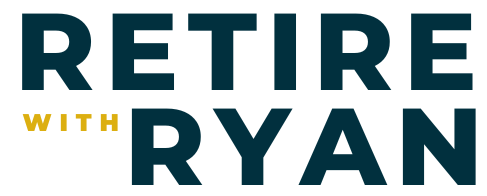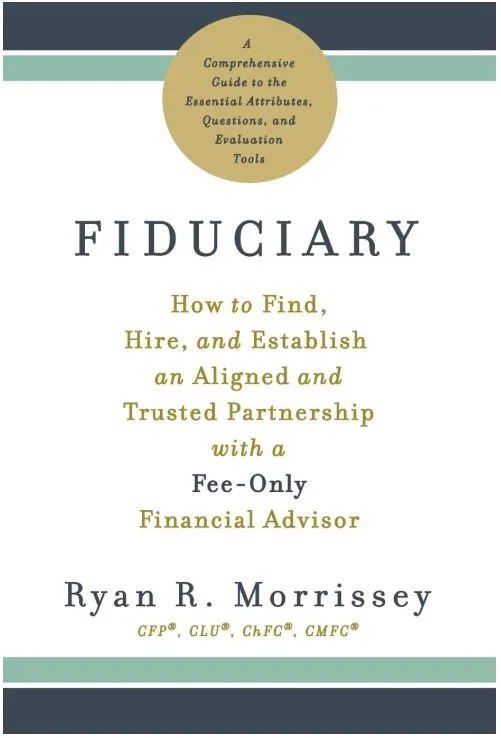4 Ways To Locate An Old 401K or Retirement Plan
Did you ever leave a job and completely forget about the 401(k) plan you had there? If so, you’re definitely not alone.
It’s estimated that billions of dollars are sitting in forgotten or abandoned retirement plans across the U.S. These accounts often go unclaimed simply because people change jobs, move, or lose the paperwork. But that doesn’t mean the money is gone forever.
In this post (inspired by a recent podcast episode), I’ll walk you through four practical steps to help you track down those old retirement accounts and explain how to make the most of them once you’ve found them.
Where Could Your Old 401(k) Be?
If you're unsure where your old 401(k) is now, there are three likely places it could be:
Still with your old employer's plan provider.
Transferred to a new plan provider (especially if the company merged or changed providers).
Sent to your state’s unclaimed property division.
Let’s break down how to go about finding it.
Step 1: Contact Your Old Employer
Start simple. Reach out to your former employer’s HR or benefits department. If they’re still in business, they should be able to point you toward the current location of your 401(k).
What happens next depends on your old account balance:
Less than $1,000: The plan provider may have automatically cashed out your account and mailed a check. If you didn’t receive or cash that check, it may be void by now—and you’ll have to request a new one. Be aware: if you didn’t roll it over into another retirement plan within 60 days, it could be taxable income.
$1,000 to $5,000: The plan provider might have transferred your balance into a safe harbor IRA—but it may be just sitting there in cash, not earning much.
More than $5,000: Your money is likely still in the plan, waiting for you to log in and reclaim it. This is usually the easiest scenario to recover from.
Step 2: Search Retirement Plan and Pension Databases
If your old employer no longer exists or you can’t reach anyone, try these resources:
UnclaimedRetirementBenefits.com – A national registry to check for unclaimed retirement benefits using your Social Security number.
MeetBeagle.com – Another tool to help track down old 401(k)s.
Department of Labor’s Abandoned Plan Database – Search for plans abandoned by former employers.
Pension Benefit Guaranty Corporation (PBGC) – If you had a pension with a now-defunct employer, search their unclaimed pensions database.
FreeErisa – Create a free account to view historical retirement plan filings and track down former plans.
Step 3: Check State Unclaimed Property Databases
If your old 401(k) or pension plan was abandoned, it might’ve ended up with your state’s unclaimed property division.
Use MissingMoney.com, a nationwide tool affiliated with state governments, to search across multiple states at once.
You can also go directly to your state’s own unclaimed property website—especially the state where your former employer was based.
Step 4: Leverage the New 401(k) Clearinghouse
Here’s some good news: Fidelity, Vanguard, and Alight Solutions—three of the largest 401(k) administrators—recently launched a 401(k) Clearinghouse.
This initiative is designed to make retirement plan transfers smoother. If you switch jobs and don’t roll over your old 401(k), these companies will now automatically transfer your money to your new employer’s plan (if they use the same providers).
This clearinghouse already covers about 40% of all 401(k) assets—so if your plans were held at one of these providers, your money might already be on the move, without you lifting a finger.
What to Do After You Find Your Old 401(k)
Once you locate an old account, you might be tempted to immediately roll it over. But wait—it’s not always the right move.
Before taking action, consider:
Fees: Request a participant fee disclosure to understand what you’re being charged.
Performance: Is the money sitting in cash? Could it be invested better?
Fit with your overall strategy: Does it make sense to consolidate, or would keeping it separate help diversify your portfolio?
Closing Thoughts
Tracking down an old 401(k) may take a bit of legwork—but it’s absolutely worth it. Even a small forgotten balance can grow significantly over time if it’s reinvested properly.
So don’t leave money on the table. Use these tools, dig through your old paperwork, and take back control of your retirement savings.
If you have a question or topic that you’d like to have considered for a future episode/blog post, you can request it by going to www.retirewithryan.com and clicking on ask a question.
As always, have a great day, a better week, and I look forward to talking with you on the next blog post, podcast, YouTube video, or wherever we have the pleasure of connecting!
Written by Ryan Morrissey
Founder & CEO of Morrissey Wealth Management
Host of the Retire with Ryan Podcast



